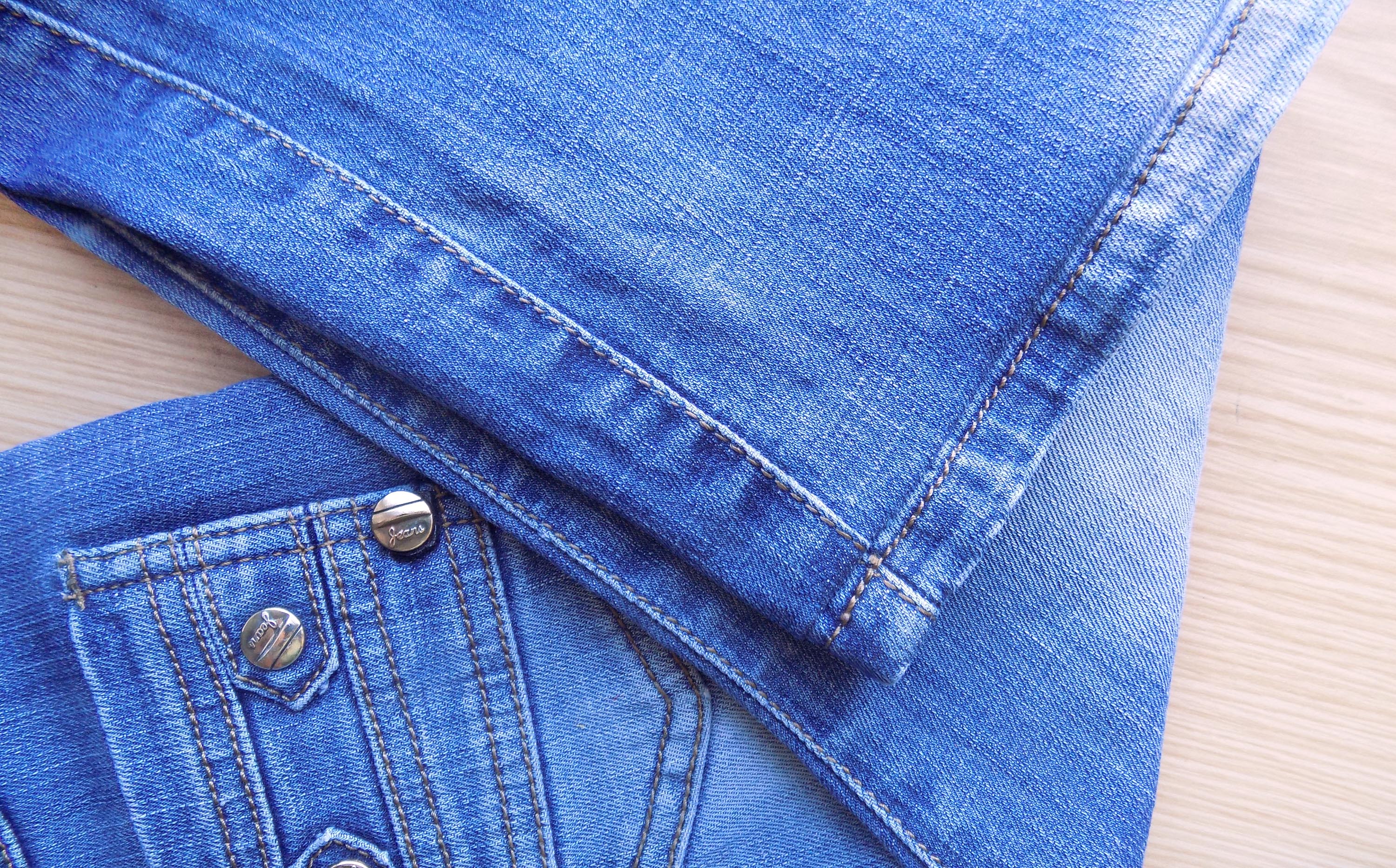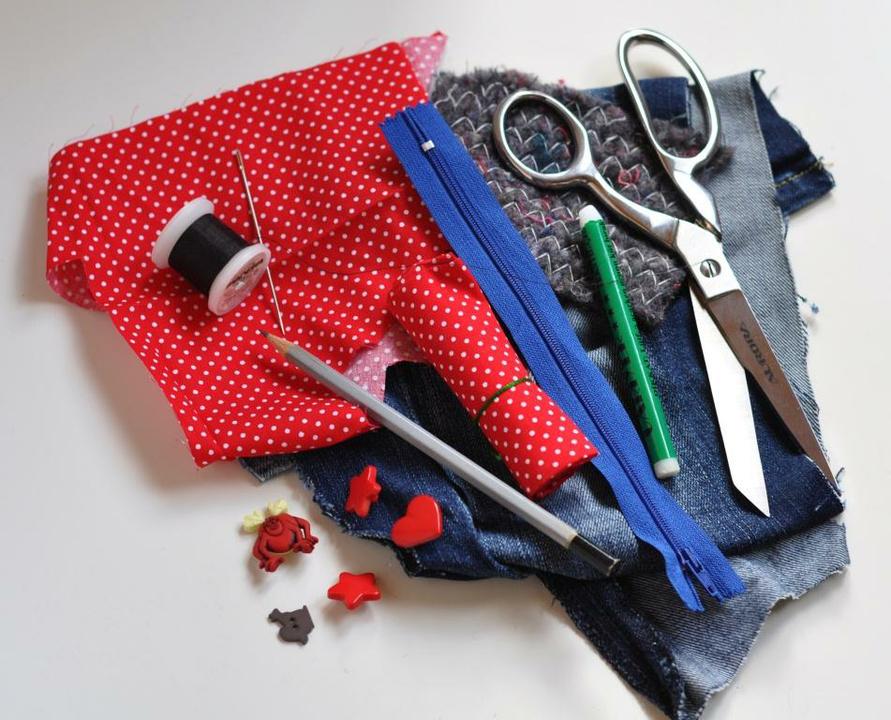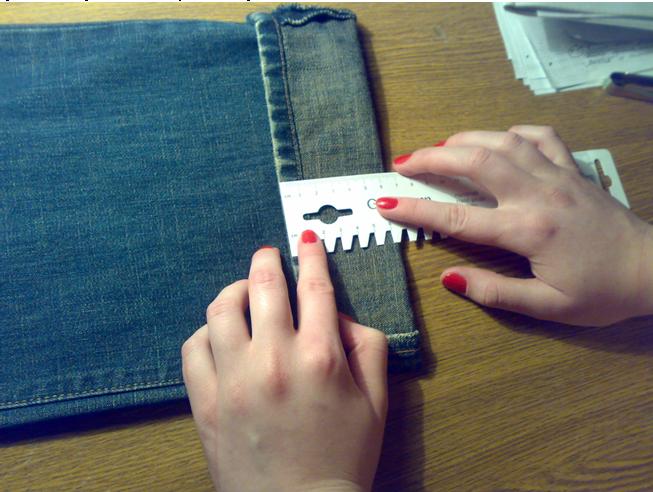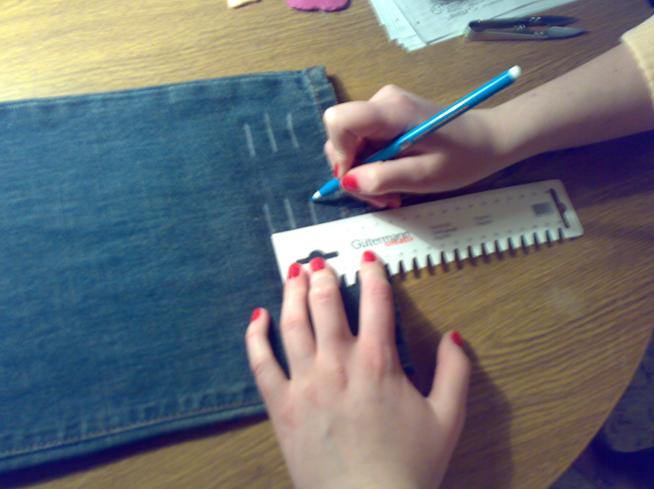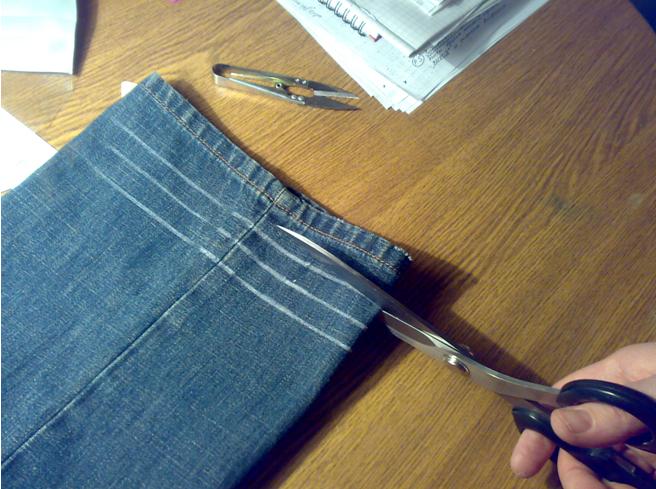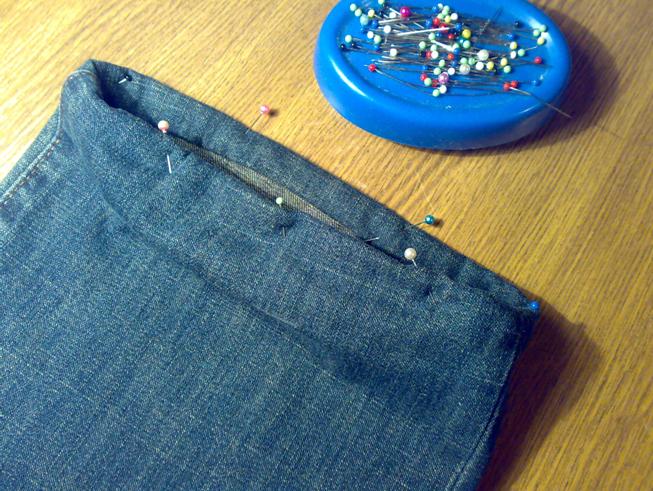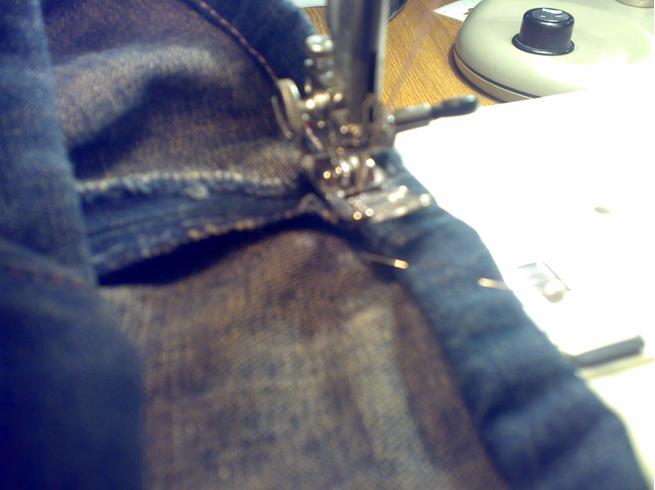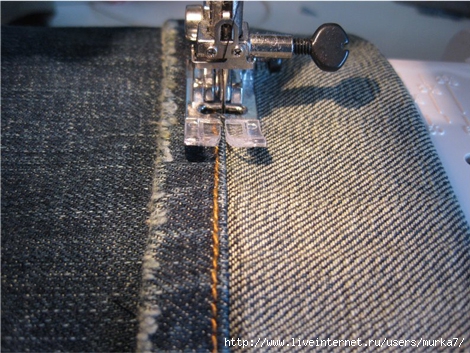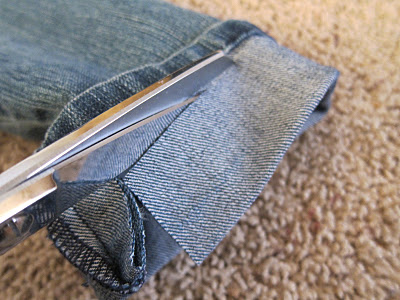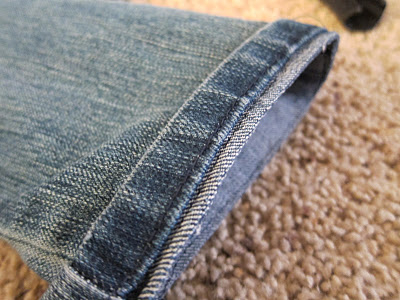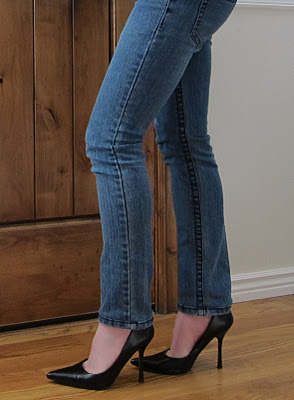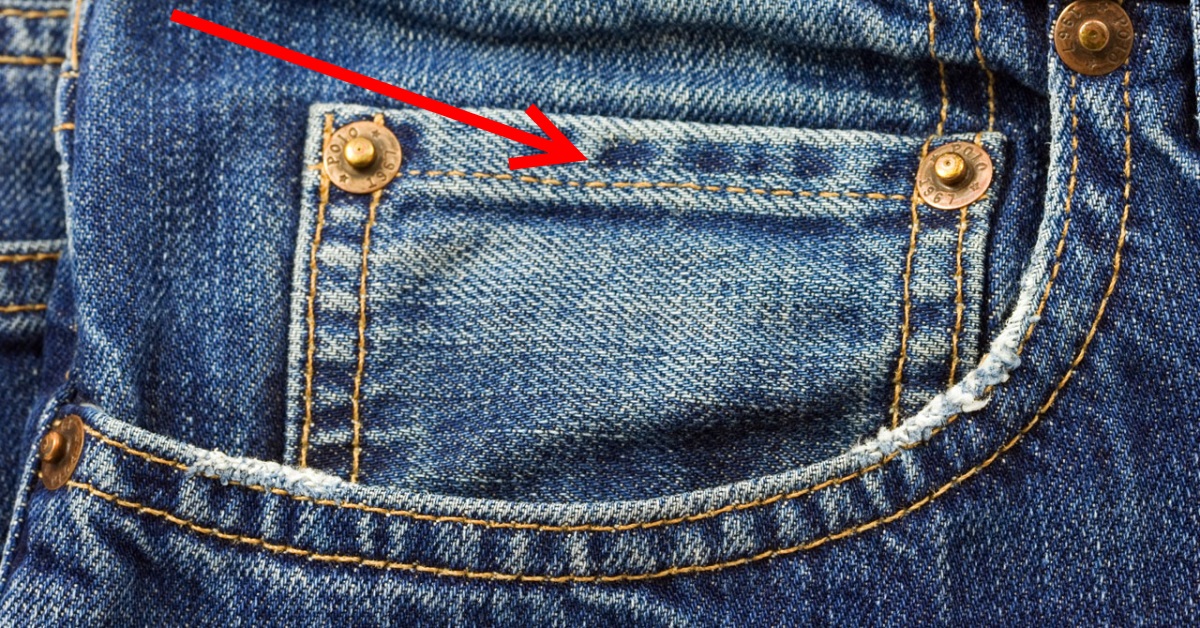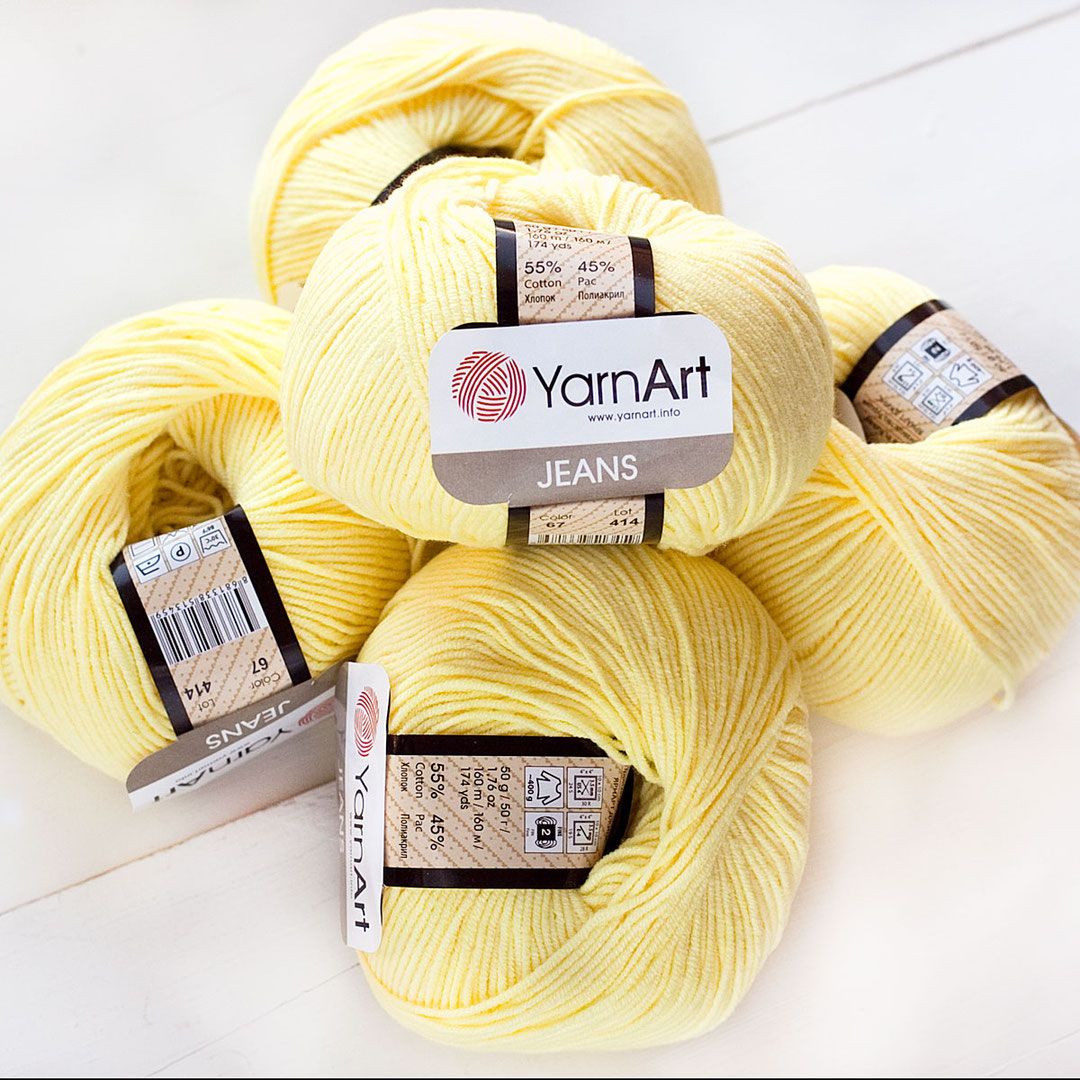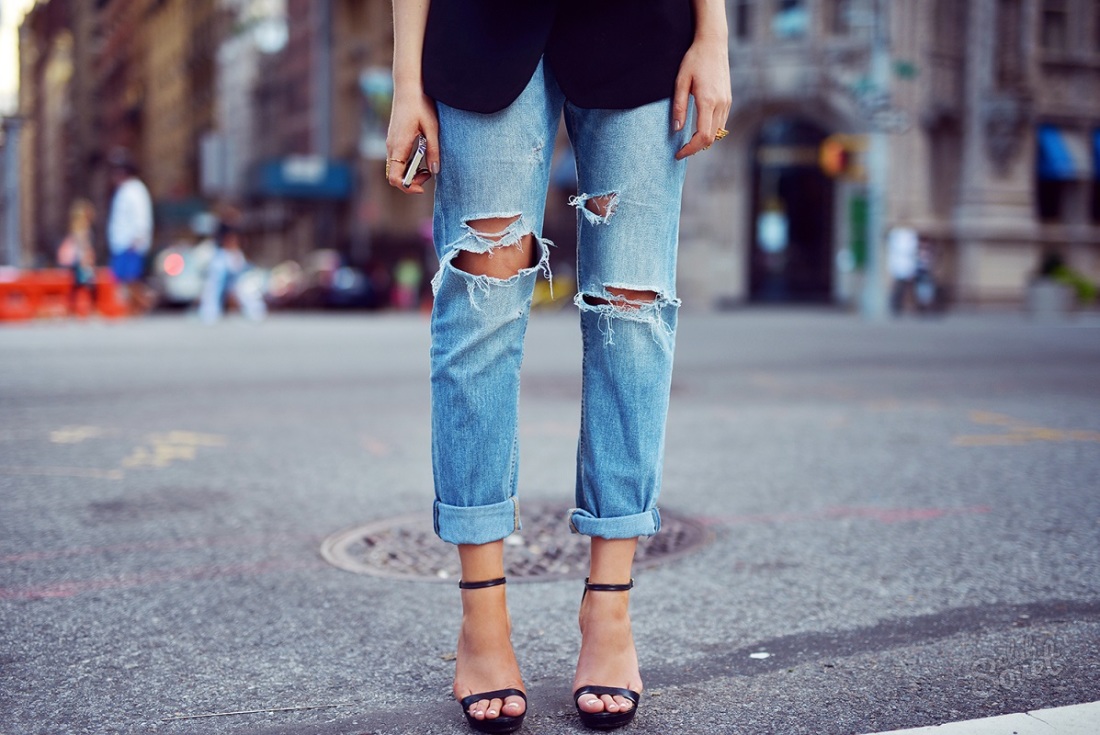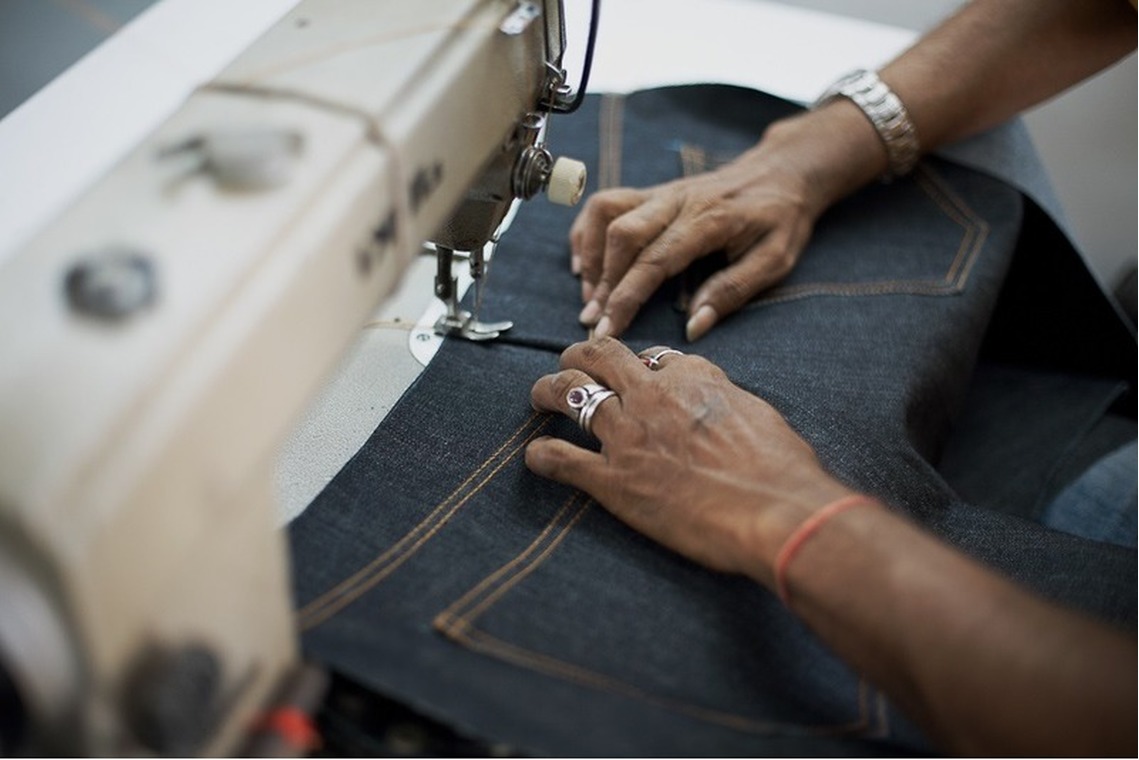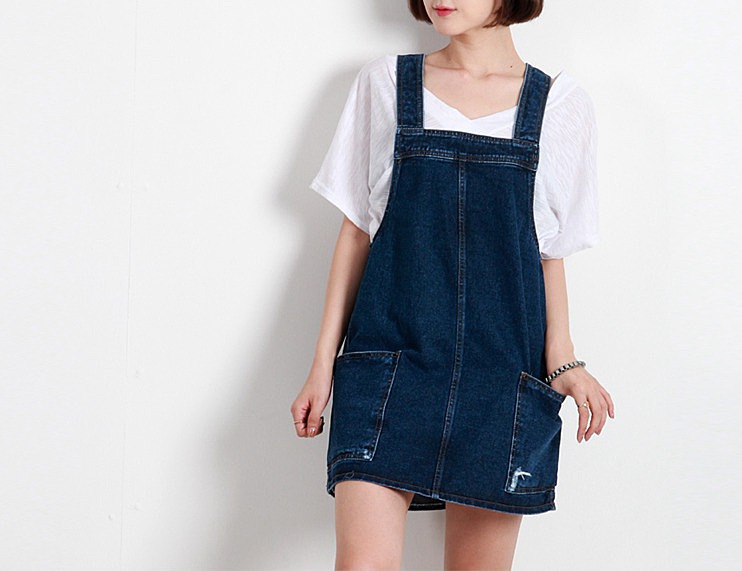When buying new trousers, people often face a banal problem - their length is longer than necessary for a perfect fit. A universal option for women's, men's and children's clothing - jeans, presented in the widest range. Those who have purchased new trousers will be interested to know how to hem jeans on a sewing machine and preserve the factory seam. Denim items are practical, fashionable, durable, therefore they are presented in the wardrobe of every person. Advice from needlewomen will tell you how to do the job correctly, spending a minimum of time.
Necessary tools and materials
The decorative seam along the bottom of the legs serves as a decoration for the jeans, so when shortening, you want to keep the trim. Before work, you need to remember that an incorrectly measured length of 1-2 cm can ruin the style of the trousers. To neatly hem jeans, you will need the following tools and materials:
- sewing machine for stitching on thick fabric;
- needles for processing denim material;
- tape measure, chalk (soap marker);
- tailor's scissors or regular scissors with a sharp edge;
- pins, thick threads to match the stitching on the pants;
- threads in the color of jeans for an invisible hemming of the edge.
Experts recommend taking measurements strictly along the right leg. Then you should carefully straighten the jeans - lay the item out on a flat table surface, fold the legs inward, align the side seams, waist line, pockets and inner seam. There should be no folds or distortions in the fabric.
How to properly cut jeans without damaging the decorative look of the bottom of the trousers: first measure the jeans, mark the hem and fold them over, try them on again with shoes. Then cut the right leg, try them on again and shorten the left leg. Before making the machine seam, baste the hem line with contrasting threads.
Methods of hemming
To end up with properly hemmed jeans, you need to clearly mark and cut the legs. Be sure to add two hem widths to the cut line. Put on and try on the jeans without shoes, and fold the excess length of the pants inward and pin them. Use chalk to mark the hem line along the back contour, which should touch the floor. How to fold and shorten jeans while preserving the factory edge:
- if you need to hem a women's model under a heel, the jeans are rolled up not to the floor, but a little longer;
- men's trousers are tried on again after preliminary hemming and the hem is adjusted to fit the shoe - slightly above the sole;
- Skinny women's denim pants are measured taking into account the features of the figure so that the legs do not gather like an accordion;
- before you fold your jeans up nicely, you hem them along the back edge, without slanting the front of the legs;
- on the fabric, draw a line under the ruler parallel to the factory stitching with an allowance of 3-4 cm (double the width of the hem).
If necessary, rip the factory seam, remove the threads and carefully smooth out the denim material. After aligning the legs, draw the main shortening line, focusing on the cut leg. When marking, take into account the allowance. It should be taken into account that not all sewing machines can process thick denim. In some cases, you will have to hem the jeans manually - how to do this carefully is described in the master class. If the machine "takes" thick fabric and rough places at the seam joints, the work is significantly simplified.
On the typewriter
To obtain a beautiful decorative seam similar to the factory finish, you need to select thick, strong threads of the appropriate shade. It may be difficult to thread the thread into the eye of the machine needle. Needlewomen advise not to thread thick threads into the machine (unless it is an industrial model with a 150-number needle). You should wind a thread of normal thickness twice on the bobbin, using two spools. The tension of the upper thread must be adjusted. How to properly hem jeans on a machine - instructions:
- put on pants, mark the shortening line;
- measure the length of the hem and leave an allowance of 2 cm;
- iron the seam allowances and secure with pins;
- from the wrong side, rip out the reverse stitch;
- carefully pull out the decorative stitch along the loops;
- thread the removed threads into the machine - needles No. 90, 100, 110;
- stitch a new seam along the wrong side of the leg.
If the product is made of thin fabric, you can hem the jeans yourself without cutting off excess material. This is suitable in cases where the hem length is insignificant. After trying on, mark the shortening line, fold the excess fabric inward and make an invisible stitch by hand with short stitches.
If the jeans are made of a coarse, dense material and there are decorative abrasions along the bottom, proceed as follows: try on, hem, shorten the legs with an allowance of 3.5 cm. Then the allowances are ironed in different directions, overcast by hand, the factory bottom is folded, basted and stitched. This is a simple way to shorten jeans while preserving the frayed edge. On the inside, you get an overcast allowance, but it is possible not to spoil the appearance of the product.
With preservation of the factory seam
Jeans look much nicer when there is a decorative stitch along the bottom of the legs. The easiest way to hem any trousers is to cut off the excess, fold the material twice and run a new seam on the machine. You need to select threads of the appropriate color, but if this is a problem, you can use another method of hemming jeans while preserving the seam:
- put on jeans, put on shoes and mark the edge of the hem so that there is one to one and a half centimeters from the shortening line to the floor. Then pin it;
- move around in the pants - squat down, walk around to accurately mark the cut line, pin them again;
- measure out the excess, for example, 7 cm. Turn the trousers inside out, measure half the length of the hem (3.5 cm) from the bottom to the factory fold;
- measure 3.5 cm (in this case) around the trouser leg, pinning it with needles or pins;
- stitch the jeans along the very edge of the factory hem, measure and cut off the excess from the resulting stitching, leaving 1.5 cm;
- process the edge on an overlock, turn the jeans inside out and make an invisible seam with threads in the same color as the pants along the edge of the allowance, iron.
When cutting jeans, the factory side seams will be damaged. They need to be carefully and evenly joined so that the lines match and the side seam does not shift. You need to pay attention to this point so as not to redo everything from the beginning. Additionally, you can make two stitches on the side seams on the inside of the legs so that the completed allowance does not bend back.
If you need to shorten jeans with fringe at the bottom, rolling them up without cutting off the excess fabric will look unsightly. The best option for how to trim jeans with fringe is to make the decorative trim yourself. To do this, measure the pants, mark the length of the hem. It is necessary to take into account that a reserve of material is required to make the fringe. The jeans are turned inside out, the edge is cut off and they begin to rip the side seams to the length of the fringe. Next, with manicure scissors or a thick needle, pull out the transverse threads - you get a beautiful decor. There are two main options for how to cut jeans and make fringe - with a seam above the decor or without a seam. An invisible line above the fringe will prevent the threads from unraveling after wearing and washing the pants.
The masters in the studio use the simplest option - they cut off the excess fabric and stitch the bottom on the machine. This work can be done independently. The most impressive look jeans models with a decorative factory seam - it is worth preserving.
Video

